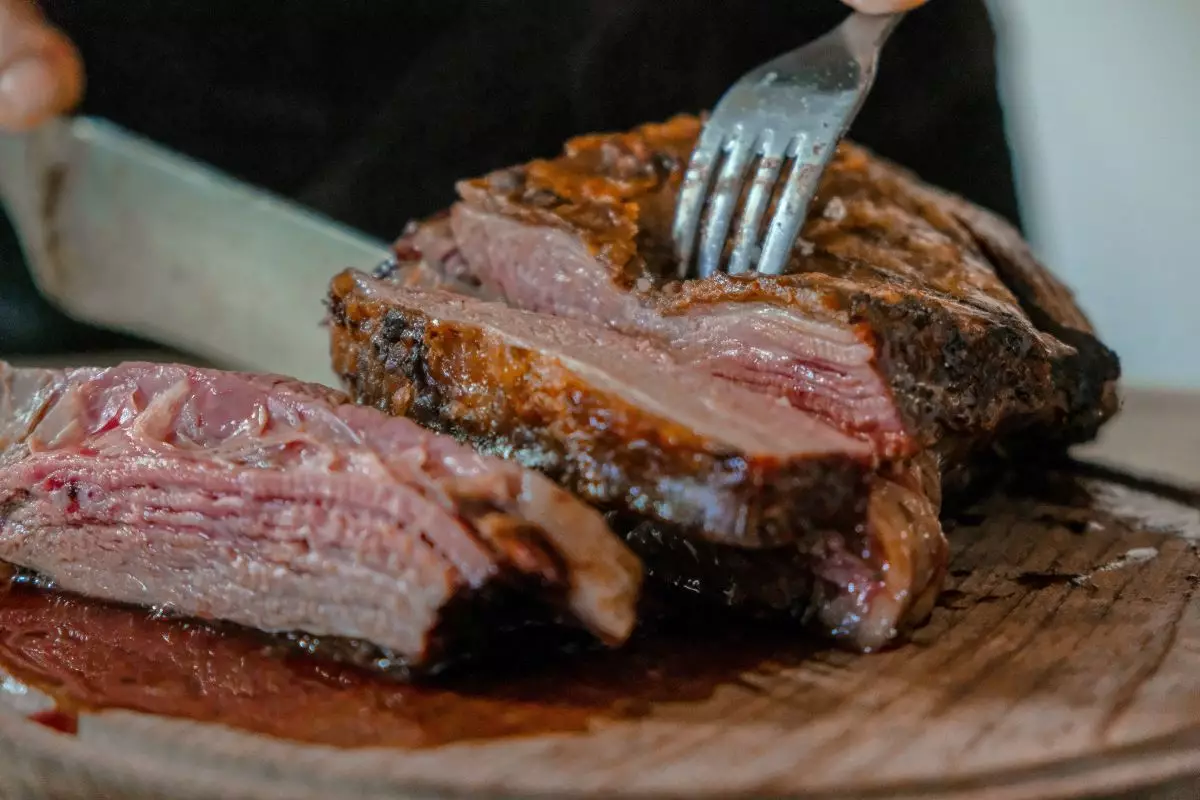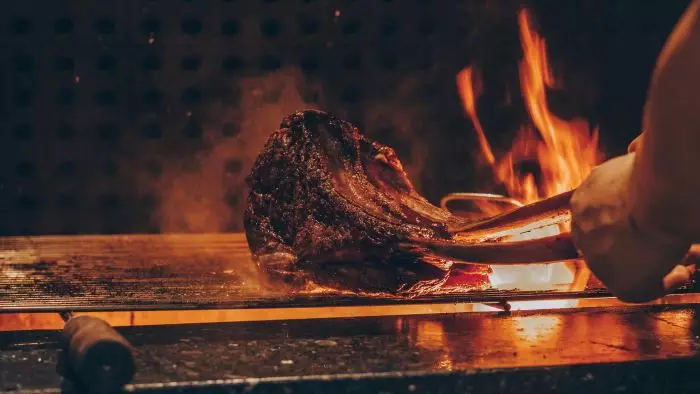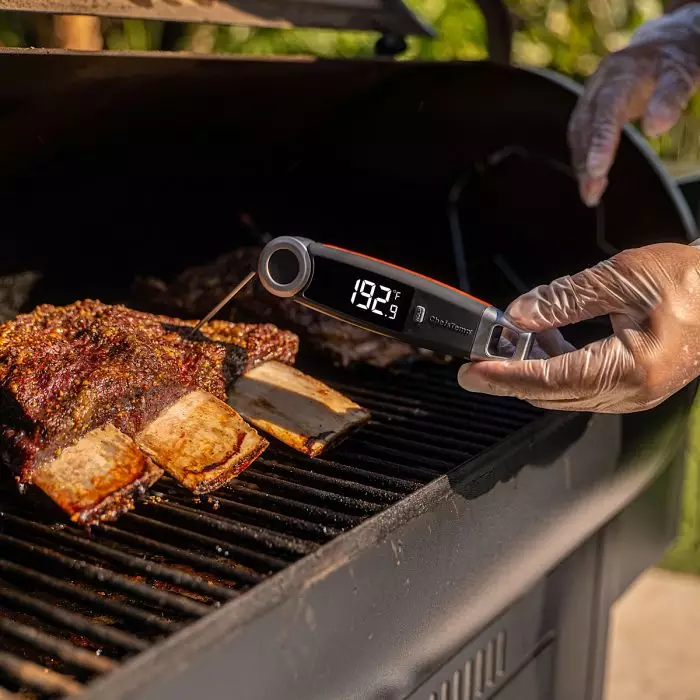
Why is My Meat Still Pink? Understanding Carryover Cooking with Thermometers
Foodborne illnesses occur when someone consumes meat that is contaminated. Contamination happens for various reasons, but one of the most well-known reasons is not cooking food properly to kill disease-causing pathogens or microbes. This is why the USDA imposes guidelines on the ideal temperature when cooking meat: to ensure it is safe to consume. These guidelines are also part of the reason why the idea of consuming pink meat creates a sense of dread in most people.
But is it safe to eat pink meat? You’ll be surprised that it’s not a black-and-white issue despite the stringent USDA guidelines.
Meat Color and Doneness: Why is My Meat Still Pink?
The general knowledge is that the color of the meat indicates its doneness. However, any cook or food safety expert will tell you it is not a reliable indicator. Instead, the internal food temperature is a better gauge when determining whether the meat is safe.

Persistent pinking is common in various kinds of meat, exhibiting a pinkish or reddish hue even after it is cooked through. It is typical in many processed meats wherein the curing agents react to the meat to create a pink pigment. This pink color can persist even after cooking the meat.
Another factor to consider when determining if pink meat is done is the pH level of the meat. Older or mature animals have higher pH levels, which makes the meat appear pink on the inside. As long as the meat has reached its recommended internal temperature and is handled properly, you should not worry about it being unsafe to consume. In addition, color is not the sole determiner of the safety of the meat. Consider the odor and texture of the meat, as well.
Carryover Cooking & Meat Doneness
Another important concept you should master when dealing with pink meat is carryover cooking. Cooking is a science, and it involves managing temperature to ensure doneness, as well as achieving the right texture and safety.
Carryover cooking involves removing the meat from the oven or grill before it reaches its desired internal temperature (or sooner than the recommended cooking time). Thermal and physical forces affect your cooking, and your mastery of them will lead to more consistent cooking results, especially when it comes to meat.
Look deeper into carryover cooking and how that plays into pink meat.
The first concept you should master is the second law of thermodynamics. Take this as an example: you place a glass with a cold drink on a windowsill on a hot summer’s day. Leave the cold glass for some time. When you remove the glass, it will have become warmer because it has surrendered some of its coldness and transferred it onto the specific part of the windowsill where it was left to sit. This part is now slightly colder than the rest of the windowsill.
This concept also applies to meat through carryover cooking. When you put the meat inside the oven, the heat within the oven will transfer to the inside of the meat. This coincides with the concept of heat transferring to anything cold to produce an even temperature.
Another essential element to carryover cooking is the heat capacity. It refers to the ability of a substance to store thermal energy, which in this case is the meat. It can transfer heat from the oven to the meat, which cooks the meat within. Therefore, you need to set your oven at a specific temperature because the mass and volume of a given substance will impact how much energy it can store. For this reason, a larger piece of meat, such as a brisket, will require higher cooking temperatures and longer cooking times.
The final element involved in carryover cooking is heat transfer. This refers to the distribution of meat within the substance. Using the meat as an example above, the meat absorbs the heat and stores it within. The heat distribution within the meat facilitates the internal cooking process. Essentially, it refers to the heat flow within the meat as it moves from one point to another. The heat will penetrate from the exterior of the meat and travel towards the center to produce even cooking.
Understanding the concept of heat transfer in meat also requires you to know the temperature gradient. Since the heat transfer occurs at various phases, all layers of the interior of the meat don’t cook evenly. Therefore, cooking meat in a shorter amount of time than recommended would result in the center being uncooked while the outermost portion of the meat is cooked. It also explains why you must stick the thermometer probe into the centermost part of the meat to get the most accurate reading of its internal temperature. If you stick it onto the skin, the temperature will be higher than the center.

What Factors Affect Carryover Cooking?
Carryover cooking is a challenging concept to master. You must be aware of the different variables that can affect the cooking results.
- Mass – It refers to the heat capacity of a piece of meat. A higher thermal mass is common with bigger pieces of meat since there is more space for heat to be stored and move around even after it is removed from the oven or cooking environment.
- Shape—The shape of the meat can also impact carryover cooking. The cut of the meat will determine how much heat can escape once it is removed from the oven. A sphere is the ideal shape for carryover cooking, as it allows the least amount of heat to escape.
- Temperature—The cooking temperature also affects the possibility of carryover cooking in meat. A high oven temperature produces more heat than a low oven temperature. The former facilitates carryover cooking, as there is more heat energy for the meat to store even after you remove it from the oven.
Is pink meat safe to eat? If the meat is stored correctly and cooked to the recommended internal temperature, you have no reason to worry about any signs of persistent pinking. You should always use a meat thermometer to check doneness and ensure it is safe to eat.
Discover Other ChefsTemp Products
Discover more recipes and learn kitchen tricks by joining our cooking family on Facebook.
You may also like:















